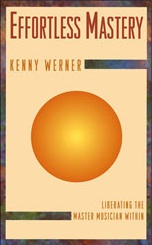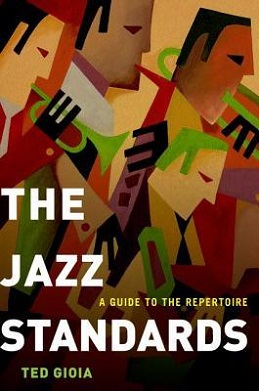 W
WAll Music Guide to Jazz is a non-fiction book that is an encyclopedic referencing of jazz music compiled under the direction of All Media Guide. The first edition, All Music Guide to Jazz: the Best CDs, Albums & Tapes, appeared in 1994 and was edited by Ron Wynn with Michael Erlewine and Vladimir Bogdanov. The book's fourth edition was released on November 27, 2002, and was edited by Vladimir Bogdanov, Chris Woodstra and Stephen Thomas Erlewine.
 W
WBeneath the Underdog: His World as Composed by Mingus is the autobiography of jazz bassist and composer Charles Mingus. It was first published in 1971, by Alfred A. Knopf.
 W
WBlues People: Negro Music in White America is a seminal study of Afro-American music by Amiri Baraka, who published it as LeRoi Jones in 1963. In Blues People Baraka explores the possibility that the history of black Americans can be traced through the evolution of their music. It is considered a classic work on jazz and blues music in American culture. The book documents the effects of jazz and blues on American culture, at musical, economic, and social levels. It chronicles the types of music dating back to the slaves up to the 1960s. Blues People argues that "negro music"—as Amiri Baraka calls it—appealed to and influenced new America. According to Baraka, music and melody is not the only way the gap between American culture and African-American culture was bridged. Music also helped spread values and customs through its media exposure. Blues People demonstrates the influence of African Americans and their culture on American culture and history. The book examines blues music as performance, as cultural expression, even in the face of its commodification. To Baraka, Blues People represented "everything [he] had carried for years, what [he] had to say, and [himself]". The book is deeply personal and chronicles what brought him to believe that blues was a personal history of his people in the United States. The resonance and desperation of this type of music is what compelled Baraka to learn about the history of blues music. He learned through his studies that the "Africanisms" is directly related to American culture, rather than being solely related to Black people. Baraka dedicates the book "to my parents ... the first Negroes I ever met".
 W
WBut Beautiful is a book about jazz and jazz musicians by Geoff Dyer. First published in 1991, it is the first of Dyer's so-called "genre-defying" works.
 W
WThe Charlie Parker Omnibook is a collection of transcriptions of compositions and improvised solos by jazz saxophonist Charlie Parker. It is available for E-flat, B-flat, C and bass-clef instruments. It includes 60 pieces, transcribed by Ken Slone with proofreading assistance from Jamey Aebersold, information about the records, and practice suggestions.
 W
WComing Through Slaughter is a novel by Michael Ondaatje, published by House of Anansi in 1976. It was the winner of the 1976 Books in Canada First Novel Award.
 W
WEffortless Mastery is a book written by jazz pianist Kenny Werner, that deals with musical freedom for musicians. It comes with an audio CD containing four meditations.
 W
WEmpire of Sin: A Story of Sex, Jazz, Murder, and the Battle for Modern New Orleans is a 2014 non-fiction book by American author Gary Krist. The book is focused on the early 20th century in New Orleans, around the time that jazz became in vogue in the city. Much of the book is set in and around Storyville, New Orleans. A major figure detailed in the book is Thomas C. Anderson.
 W
WThe Jazz Standards: A Guide to the Repertoire is a 2012 book by Ted Gioia documenting what he considers to be the most important tunes in the jazz repertoire. The book is published by Oxford University Press. The book features a range of jazz standards in alphabetical order, from Broadway show tunes by the likes of George Gershwin and Irving Berlin, to the standards of esteemed jazz musicians such as Duke Ellington, John Coltrane, Miles Davis, Thelonious Monk, Wayne Shorter and Charles Mingus. In the book Gioia has recommendations for definitive covers of each standard to listen to, over 2000 in total.
 W
WThe Jazz Theory Book is an influential work by Mark Levine, first published in 1995. The book is a staple in jazz theory, and contains a wide range of jazz concepts from melodic minor scales and whole tone scale to bebop scales, diminished scales and "Coltrane" reharmonization. Levine assumes that the reader can read music, and gives over 750 musical examples.
 W
WThe Lydian Chromatic Concept of Tonal Organization is a 1953 jazz music theory book written by George Russell. The book is the founding text of the Lydian Chromatic Concept (LCC), or Lydian Chromatic Theory (LCT). Russell's work postulates that all music is based on the tonal gravity of the Lydian mode.
 W
WMiles: The Autobiography is the autobiography of American jazz musician Miles Davis. First published in 1989, the book was written by Davis with poet and journalist Quincy Troupe.
 W
WThe Penguin Guide to Jazz is a reference work containing an encyclopedic directory of jazz recordings on CD which were currently available in Europe or the United States. The first nine editions were compiled by Richard Cook and Brian Morton, two chroniclers of jazz resident in the United Kingdom.
 W
WSounds Like London: 100 Years of Black Music in the Capital is a 2013 book by the British music journalist and author Lloyd Bradley. The book features contributions by Eddy Grant, Osibisa, Russell Henderson, Dizzee Rascal and Trevor Nelson, with an introduction by Soul2Soul's Jazzie B.
 W
WStraight Life: The Story of Art Pepper is the autobiography of jazz saxophonist Art Pepper written with his wife, Laurie Pepper. It was published in 1979 by Schirmer Books.